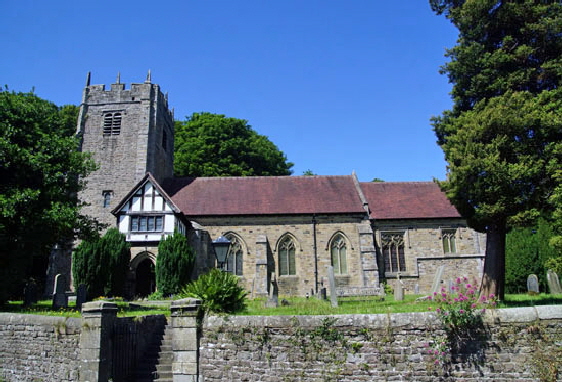|
|
||||||||||||||||||||||||||||||||||
|
qualifies as “modern” even in England. Its half-timbered south porch softens its whole appearance and although we might deplore the rectangular chancel windows the westernmost on the south side has very complex and nicely-produced tracery in the Decorated style. According to Pevsner, this was Paley & Austin’s habitual piece de resistance. Built into the hillside behind the church is the fine mausoleum of the Bradshaw family which dates from 1760 at the latest. The churchyard cross makes it clear that Christianity was here long before today’s church. The belief is that there was probably an Anglian minster here dedicated to that proud and turbulent champion of the Roman form of Christianity, St Wilfrid. It belonged to a manor owned by Earl Tostig, the traitorous brother of Harold Godwinson who onvaded England in 1066 with Harald Hardrada. The Norman Roger de Poitou built a motte and bailey castle behind the church - the mound is still visible - but moved his seat to Lancaster. There was a church here in 1252 and the Dacre family - a very big deal in these parts - held the manor in subsequent centuries. The cross is known as known as the “Sigurd Cross” after its subject - the Norse Saga of Sigurd and Sigmund. Whereas Sigurd’s appearance on the Heysham hogback took some ingenuity on the part of the academics (and we can’t be sure that they have it right) on the Halton Cross he is, to the experts, completely obvious. So we need to talk about Sigurd. |
|
Sigurd, son of Sigmund, was asked by Regin to kill the dragon Fafnir who was guarding a hoard of treasure. And if you are thinking that Tolkien must have read this saga you would be totally correct! Regin and his brother had killed their own father to obtain the treasure. Regin’s brother was none other than Fafnir who had transformed himself into a dragon to dispossess Regin. Regin was disguised as a smith and he offered to re-forge the sword that had belonged to Sigurd’s father, Sigmund who had received it from Odin. No ordinary sword, then. Armed with the formidable weapon Sigurd duly slew Fafnir. Regin, obviously a man of much charm, then asked Sigurd to roast the unfortunate Fafnir’s heart so he could eat it. Sigurd accidentally burnt his thumb during the cooking process (no oven gloves in those days, you see). Sigurd did what anyone in his position would have done and promptly stuck his sore thumb in his gob. There was a speck of Fafnir’s blood on that sore thumb. When it made contact with Sigurd’s tongue he was suddenly able to understand the songs of birds. In the tree above his head were two nuthatches who warned him of Regin’s treacherous intentions. Sigurd did what any self-respecting hero would have done and cut off Regin’s head (hurrah). Sigurd loaded the treasure onto his horse, Granir, and rode off into the sunset. Unfortunately for our somewhat flawed hero the treasure included a gold ring that had belonged to the dwarf Andvan and was now accursed. Sigurd thenceforth lived a life of misfortune before shortly dying. He didn’t even get a share of Tolkien’s money. Phew! Now you will notice that these events are a bit obscure on the Heysham hogback, but not here at Halton. One panel has Regin re-forging the sword surrounded by the tools of the smith’s trade. Other key events portrayed are a headless Regin, Sigurd sucking his thumb while he roasts Fafnir’s heart, the bird’s whispering in Sigurd’s ear and so on. The cross is believed to date from AD1000, maybe seventy years after the Heysham hogback. Further south in England, the great Anglo-Saxon church of Barnack dated from around then, as did the magnificent Anglo-Saxon tower at Earls Barton. Up here in the Anglo-Norse country, it seems, the Pagan-Christian dilemma persisted for longer and it is important to stress that at Halton and Heysham we are talking about the Norse, not the Danes who infiltrated and ruled much of the west and middle of the country. They may have been lumped together by history as “The Vikings” but their cultural and geopolitical identities and not the same. Some of the carvings on the western side of the churchyard cross can be interpreted as Christian. The same ambivalence bedevils interpretations of the celebrated Gosforth Cross in western Cumbria. There are evangelists at the top of the cross here but Pevsner reported that at least one cleric-historian believed that these were originally part of the Anglian cross inside the church. We should never underestimate the desperation of some commentators to deny the religious ambivalence of Norse and Danes for whom the Christian deity was not necessarily “The One True God”. The churchyard cross claims so much attention that it is easy to forget that the main fragment inside the church is in fact two centuries earlier. It is Anglian (it is easy to forget that this was not “Saxon” country) and predates the Norse invasion. Christianity’s advance in these islands was, over the centuries, inexorable but it is sobering to reflect that although the Vikings also succumbed to its attractions, the “One True God” malarkey suffered a setback after their conversion! |
|||||||||||||||||||||||||||||||||||||||||||||||||||||||
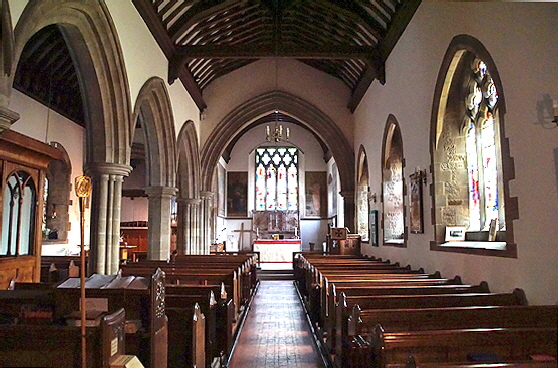 |
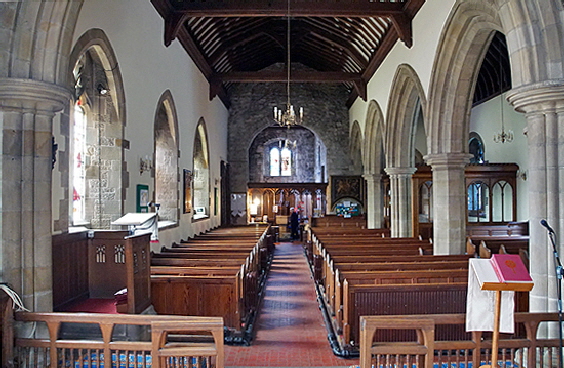 |
||||||||||||||||||||||||||||||||||||||||||||||||||||||
|
Paley & Austin’s interior. Left: looking towards the east Right: Looking towards the west through to the much older west tower. It is well done and architecturally inoffensive, |
|||||||||||||||||||||||||||||||||||||||||||||||||||||||
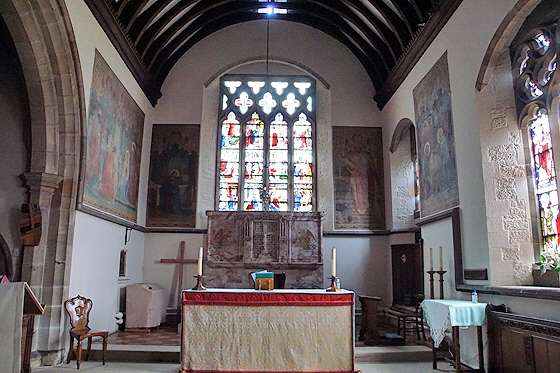 |
|||||||||||||||||||||||||||||||||||||||||||||||||||||||
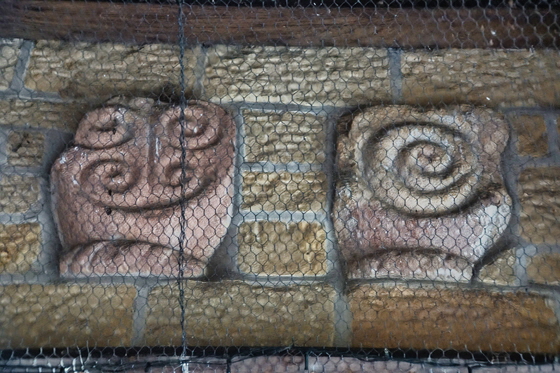 |
|||||||||||||||||||||||||||||||||||||||||||||||||||||||
|
Left: The chancel. The neo-Decorated style window is top the right. Right: Anglo-Saxon carvings preserved in the south porch. Possibly such carvings adorned the whole outside of the putative Anglo-Saxon church as at Edenham in Lincolnshire. |
|||||||||||||||||||||||||||||||||||||||||||||||||||||||
 |
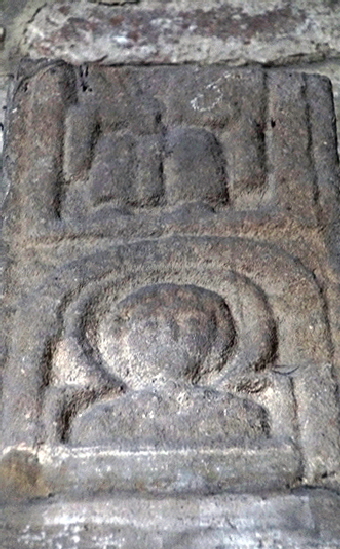 |
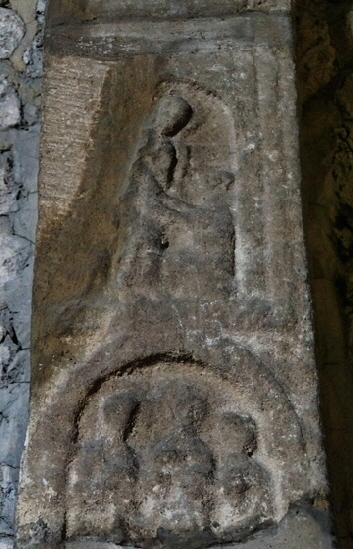 |
 |
||||||||||||||||||||||||||||||||||||||||||||||||||||
|
Left: The Anglo-Saxon cross shaft in the base of the west tower. It is a bit of a nightmare place for photography, with boxed and crates of bric-a-brac filling most of the floor space. And don’t even talk about the lighting.....Other Three Pictures: Panels of the cross shaft. Haloed heads prove its Christian provenance. |
|||||||||||||||||||||||||||||||||||||||||||||||||||||||
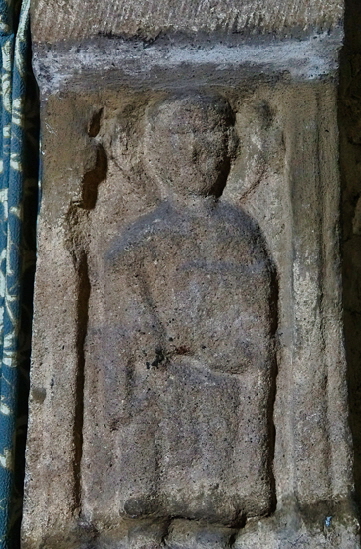 |
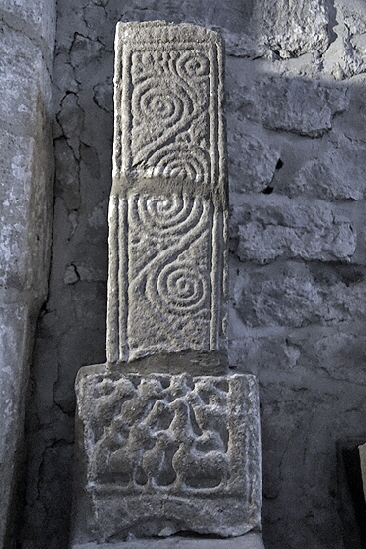 |
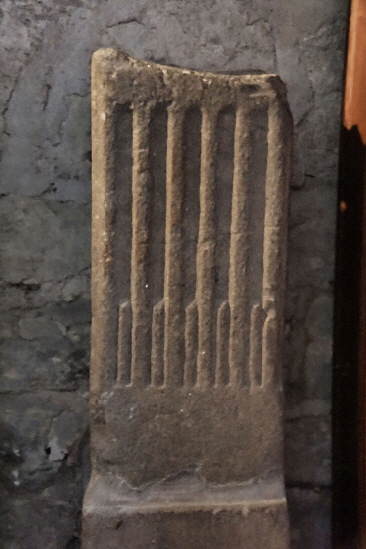 |
|||||||||||||||||||||||||||||||||||||||||||||||||||||
|
Left: Another figure on the cross shaft. Centre: Anglian or Norse? I am not sure about the provenance of this fragment of a small cross. Right: A very mysterious fragment. |
|||||||||||||||||||||||||||||||||||||||||||||||||||||||
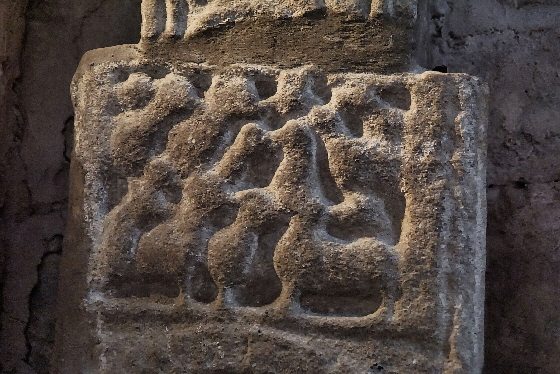 |
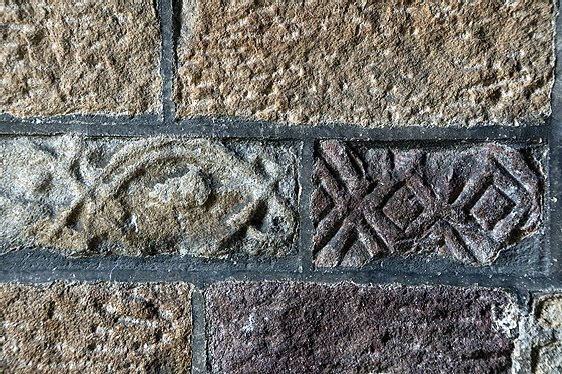 |
||||||||||||||||||||||||||||||||||||||||||||||||||||||
|
Left: The base of the cross shown in the row above. Were they originally of a piece? Right: More pre-Conquest stones set into the porch. |
|||||||||||||||||||||||||||||||||||||||||||||||||||||||
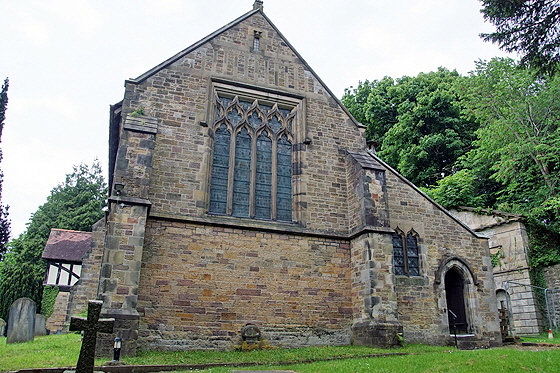 |
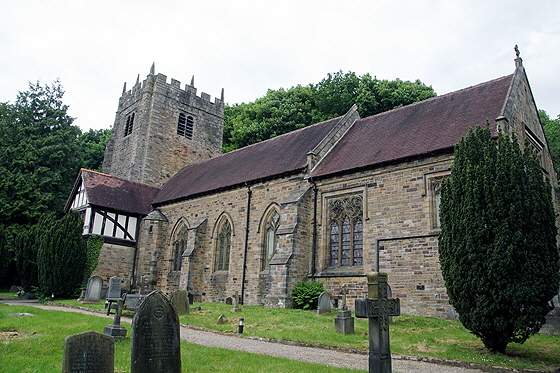 |
||||||||||||||||||||||||||||||||||||||||||||||||||||||
|
Left: The church from the east. The Bradshaw mausoleum is on the right. Right: The church from the north east with its attractive south porch. |
|||||||||||||||||||||||||||||||||||||||||||||||||||||||
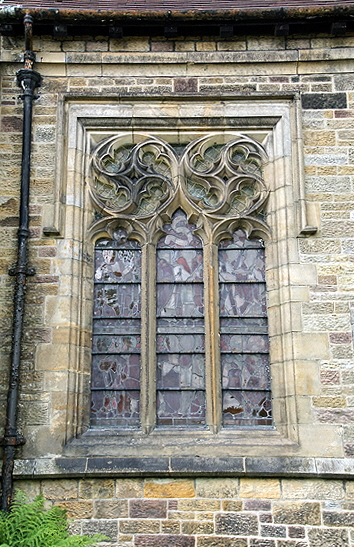 |
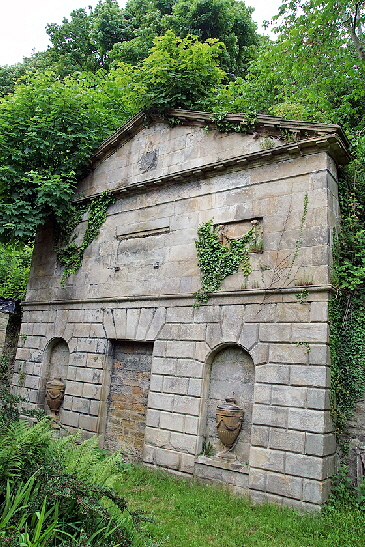 |
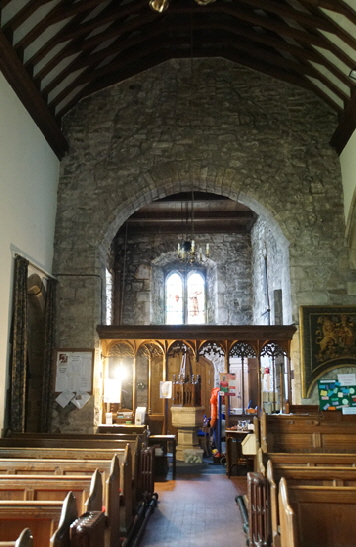 |
|||||||||||||||||||||||||||||||||||||||||||||||||||||
|
Left: Paley & Austin’s impressive neo-Decorated style window. Centre: Faded glory. The Bradshaw mausoleum. Right: Looking towards the west tower housing the Anglian relics. Incidentally, it seems clear from his description of this church that Pevsner never got to see them! |
|||||||||||||||||||||||||||||||||||||||||||||||||||||||
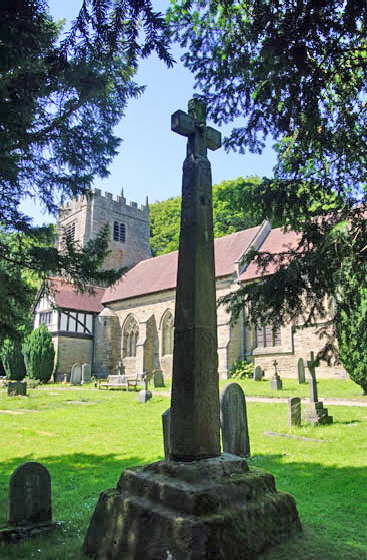 |
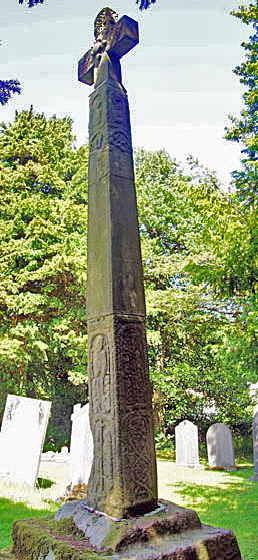 |
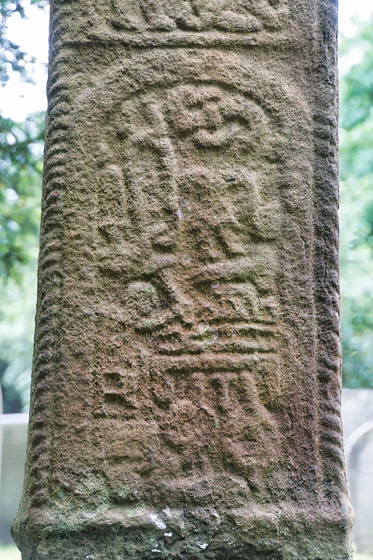 |
|||||||||||||||||||||||||||||||||||||||||||||||||||||
|
Left and Centre: Two views of the churchyard cross. It has been reconstructed with many of the decorative parts lost. At this point it is important to observe that this is a cross. So when we see the Sigurd saga here we know we really do have an Anglo-Scandinavian composition. The question we must pose is why is it here? Sigurd was not a Norse god and Odin appears only peripherally. Its appearance here does not imply religious ambiguity. Was the saga seen as having Christian allegories? Well maybe. Avarice is the main feature of the saga. Regin and Fafnir come to a bad end and Sigurd fares little better. It seems just a bit far-fetched though to think that so much of the saga was shown here in such detail just to prove that point. I think perhaps the new settlers didn’t let God get in the way of a good story. Nigel and Mary Kerr said “The Sigurd Cross is an important survival from the twilight years when Christianity and paganism battled in the minds of men”. Right: This is my favourite panel. This is Regin re-forging the sword. You can see him seated on the left, hammer in hand in front of a table. Top left is a sword or dagger, Next to it is a pair of pincers. To its right is an odd figure of a human with a piece of interlace for his head. I don’t understand that. On the table is an indistinct shape that is presumably the damaged sword. Below the table are what look two pairs of bellows. |
|||||||||||||||||||||||||||||||||||||||||||||||||||||||
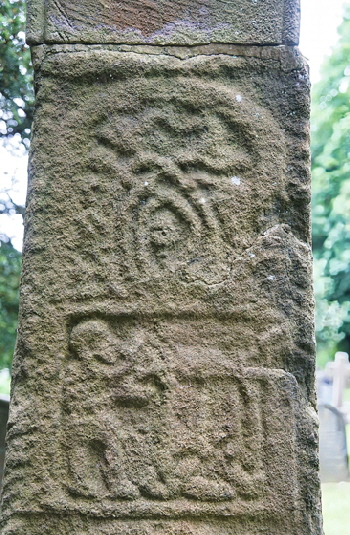 |
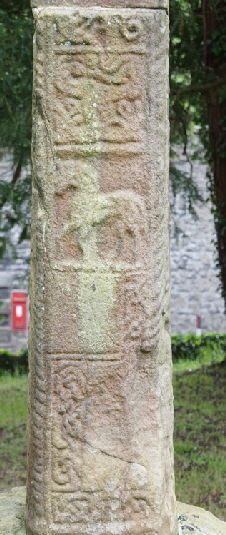 |
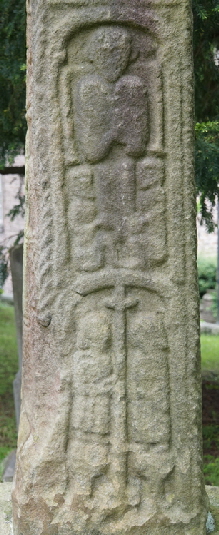 |
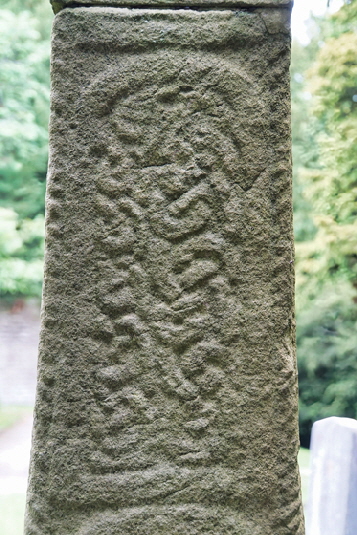 |
||||||||||||||||||||||||||||||||||||||||||||||||||||
|
Left: In the lower panel Sigurd is roasting Fafnir's heart. W.G.Collingwood’s sketch suggests Sigurd’s scorched thumb is raised which would make eminent sense. In the panel above two nuthatches tell Sigurd of Regin’s treachery. Second Left: The most obvious motif here is Sigurd’s horse, Granir. Above him is Fafnir who is represented by two dragons intertwined. The panels below are indistinct although the bottom one seems to be interlace work. Second Right: Just to remind ourselves that is is a cross shaft, the upper panel here shows a figure - possibly an angel - with two smaller figures possibly grasping his legs. In the lower panel two more figures hold onto a tall cross. Is this Christian symbolism as the Church Guide believes? Right: The The fourth side of the cross base is Scandinavian style decorative work. |
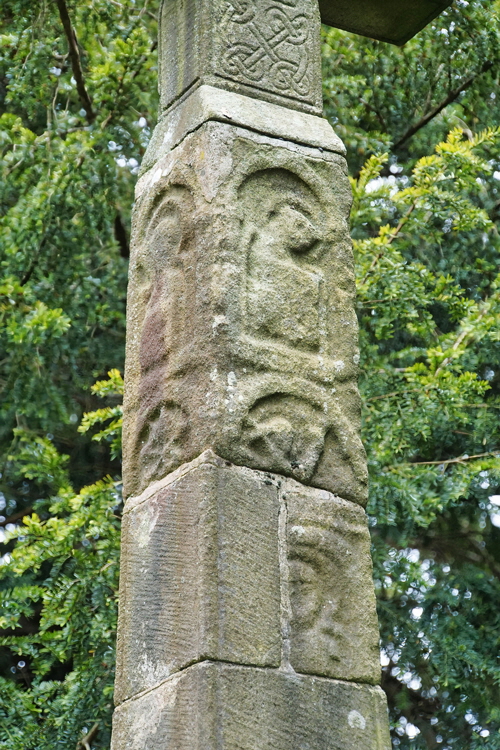 |
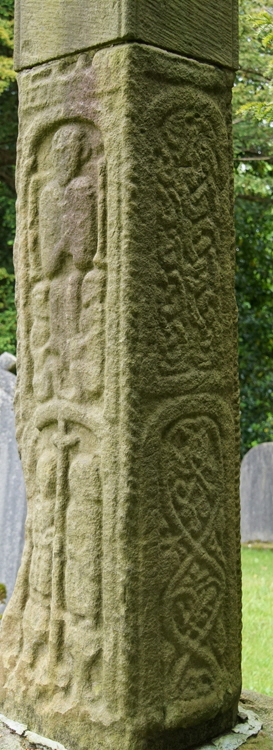 |
||||||||||||
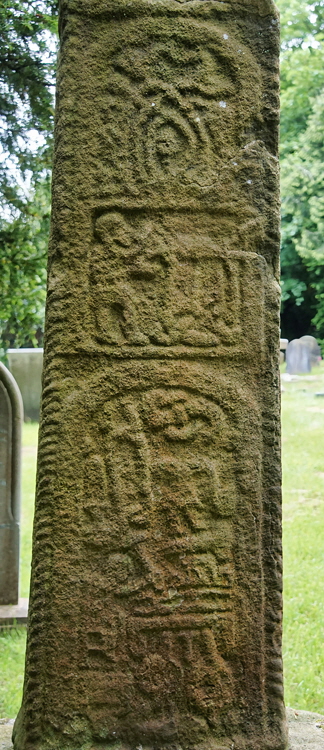 |
|||||||||||||
|
Three more views of the Sigurd Cross |
|||||||||||||
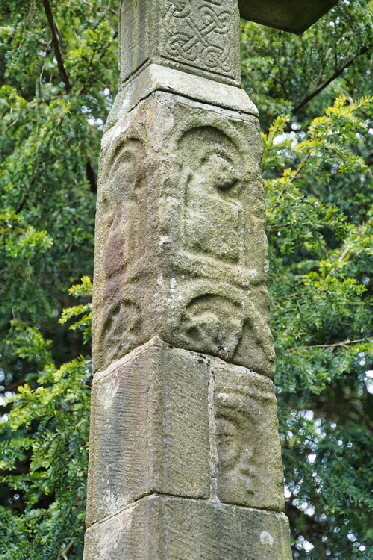 |
 |
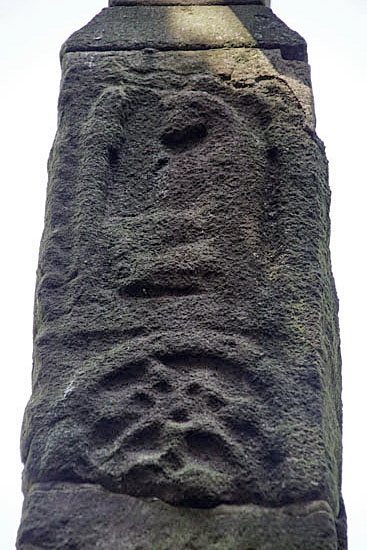 |
|||||||||||
|
The Halton Cross is actually a confection. In 1635 the vicar decided to cut off the top part of the cross and used the base with its Sigurd story as a sundial. Nobody knows what happened to the rest. In 1891 it was reconstructed using some other pieces of old carved stone found around the churchyard. This stonework predates the Viking era so all we do know about it is that it was not part of the cross built upon the base with the Sigurd story. |
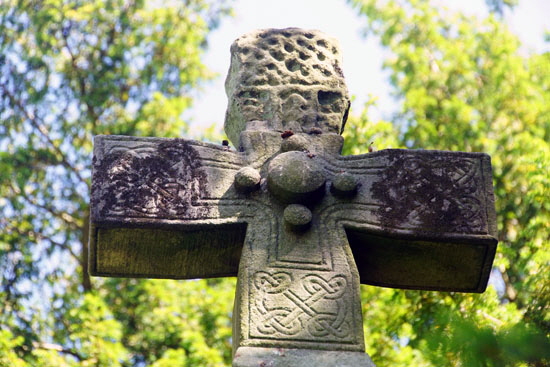 |
|
The cross head is obviously modern with the exception of the top arm which is of old Anglo design and which was found inside the church. |
|
|
|
|
I hope you have enjoyed this Page and, perhaps, many more besides. Could you help me to make it better still and preserve its future? |
